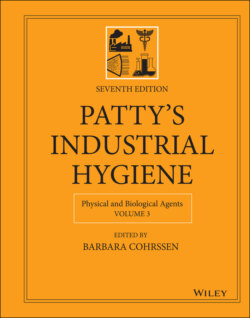Читать книгу Patty's Industrial Hygiene, Physical and Biological Agents - Группа авторов - Страница 126
4.3.2 Lamp Classifications
ОглавлениеRadiation‐emitting devices, including optical radiation sources, are subject to regulation in the United States by the U.S. Food and Drug Administration (FDA) through its Center for Devices and Radiological Health. The FDA has not established a classification system, analogous to its laser classification system, for noncoherent optical radiation sources.
In the absence of governmental regulations requiring safety‐related classification of all lamps, the IESNA has published a voluntary guideline, ANSI/IES RP‐27.3, Recommended Practice for Photobiological Safety for Lamps and Lamps Systems – Risk Group Classification and Labeling (44). This recommended practice applies to all electrically powered sources emitting radiation between 200 and 3000 nm, except for LEDs used in fiber optic communications systems and lasers. Laser‐driven broadband light sources are included under the standard.
Under the RP‐27.3 recommended practice, the lamp manufacturer should evaluate the lamp for potential to exceed exposure guidelines for UV hazards, blue‐light hazard, IR‐corneal/lens hazard, and retinal thermal hazards. The spectral weighting functions and exposure limits are similar to current ACGIH guidelines (13, 18). An exception is the retinal thermal hazard for IR sources with weak visual stimulus, where the RP‐27.3 recommended practice uses an unweighted radiance. Based on these evaluations, a lamp is classified into one of four risk groups (RGs) – Exempt Group, RG 1 (very low risk), RG 2 (low risk), and RG 3 (high risk) – based on the potential for exceeding an exposure limit for one of these hazards within specified exposure durations. The criteria for RG classification are summarized in Table 2. The manufacturer is required to label packaging for lamps classified as RG‐1, RG‐2, and RG‐3 with appropriate statements prescribed in the RP‐27.3 recommended practice, including instructions on limiting the duration of exposure to the lamp and information that the lamp emits UV or IR radiation.
In a global context, the International Electrotechnical Commission's IEC 62471:2006 standard, which was based on the ANSI/IES RP‐27 standards, has been adopted as a regulatory requirement by the European Union (EU) and other countries and has also been widely implemented on a voluntary basis by manufacturers of non‐laser light sources.
